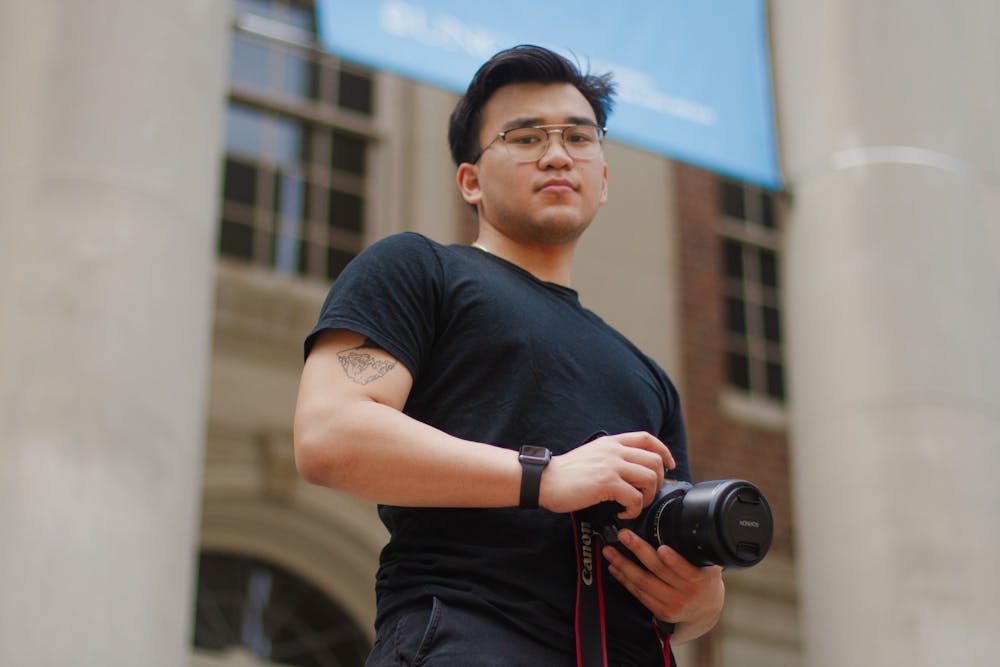“Instead of feeling seen, I have to fight for my visibility,” Consing said. “When my professors place visibility on me, I have to be the spokesperson for an entire race. That’s always a tough job as people of color. That’s the emotional labor that we have to go through just to make a space — just to mark our spot in our classroom.”
Consing said that seeing a filmmaker in the documentary industry who established themselves by embracing their individual identity was empowering.
“Now I can say ‘I’m a Filipino American documentary filmmaker, I’m a Filipino American visual journalist,' instead of just erasing that part of my identity,” he said.
Efforts within the Hussman School
Nori Comello, chairperson of the Diversity and Inclusion Board at Hussman, said that the board’s subcommittees are currently working on initiatives to increase diversity efforts for all media and journalism students. This includes listening sessions for students to voice concerns, a student advisory board composed of members representing different courses of study and faculty guidelines on how to create an inclusive classroom space. Comello said the committee is also working toward longer initiatives, such as increasing representation among faculty.
“My committee works really hard to consider the different perspectives,” Comello said. “...We want everyone to feel like they have a home, that they are supported and empowered in what they do.”
Another part of the committee’s efforts is the development of a core course – cultural competency in journalism and strategic communication. Comello said the course, which is currently in its developing stages, would be for all incoming undergraduate students to take.
“This core course is something our curriculum subcommittee is hoping to introduce to our school,” Comello said. “... To take a critical look at how we communicate about race, gender, identity and other aspects of what makes us who we are in our society. It communicates our value as a school that diversity, inclusion and equity are important foundational aspects to communicating — no matter what area of the media professions we work in.”
As part of its global immersion curriculum, the Hussman School offers a Media in Asia course where students are introduced to the media market in Asia. Before COVID-19, the course was offered during the Maymester session and students would visit Beijing, Shanghai and Hong Kong. Now, the course is a semester-long elective where students are exposed to the diversity of media systems through lectures and guest speakers.
Joseph Czabovsky, the professor of the course, said the course offers students a chance to be exposed to cultures in ways that they might not otherwise be.
“No matter what sequence you are at Hussman, we’re all in a communication business,” Czabovsky said. “We’re all in a people-centered industry and I fundamentally believe you cannot do any job that communicates with people if you don’t understand the people you are communicating with.”
Efforts beyond the classroom
To get the day's news and headlines in your inbox each morning, sign up for our email newsletters.
Lynn Owens, a broadcast professor at UNC, said she is working to carve a space for AAPI media students as vice president of the Asian American Journalist Association’s North Carolina chapter. Owens said her chapter’s goal has been to spread the word about the AAJA and increase membership.
“We’re really committed to try to bring young Asian American journalists into the field,” Owens said. “...It is an organization that really concentrates on trying to mentor the new generation, because we definitely need more Asian voices in journalism."
Owens said it is also important to bring more Asian voices into the institutional management positions – an initiative the national AAJA implements through programs for journalists in the field.
“When we talk about diversity, there’s one thing about being diverse on the face of an organization, but truthfully its institutional diversity that’s important,” Owens said. “It’s people in those management positions, people who make those big decisions – it’s important to have diversity in those roles.”
Looking forward
Susan King, dean of the Hussman School, said she is open to working with students in the future to bring more resources, such as an Asian American Journalist Association, to Hussman. King said students interested in starting one, or those who have any other concerns, can reach out to her or Trevy McDonald, director of Diversity, Equity and Inclusion.
“We want to support all students, as many students as we can who feel that they would like to create relationships among themselves,” King said.
Tobaccowala said although she doesn’t know of any AAPI-specific resources within Hussman, her academic advisers through UNC have been helpful in guiding her through the internship process as an international student.
“My academic advisers have been super helpful,” Tobaccowala said. “For internships, I need to go through the (curricular practical training) process. They help me fill in a bunch of paperwork and work with the company that I’m interning at.”
Consing said although he has participated in many opportunities outside of the school, he would like to see the Hussman administration offer more resources for UNC AAPI students in the future.
“What resource do we have as Asian Americans?” Consing said. “We don’t have any. I have to look outside of Hussman to get resources. That’s really unfortunate because Asian Americans have a lot to say about their existence."
university@dailytarheel.com



